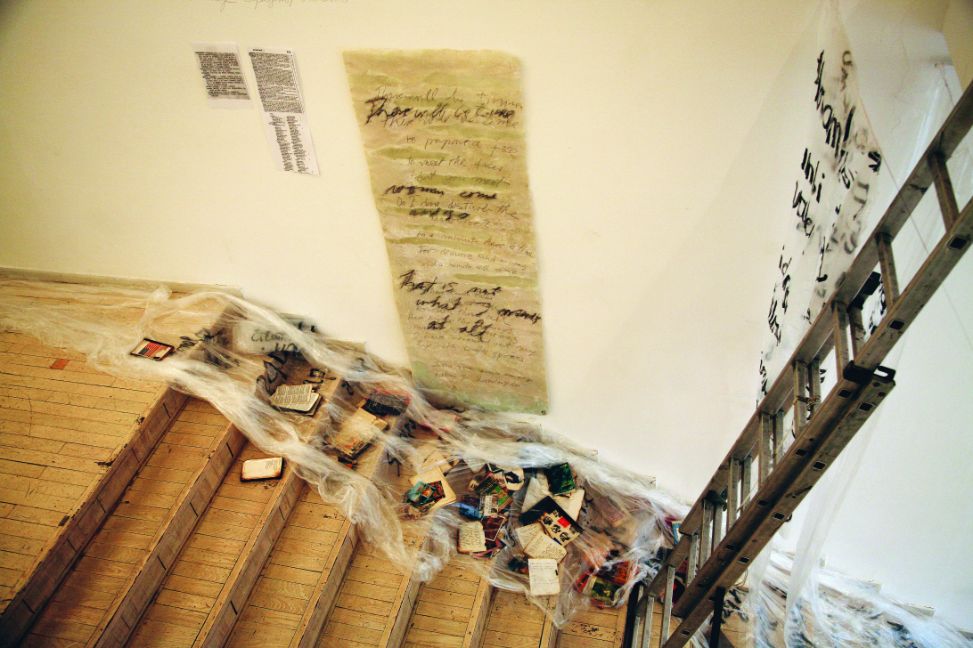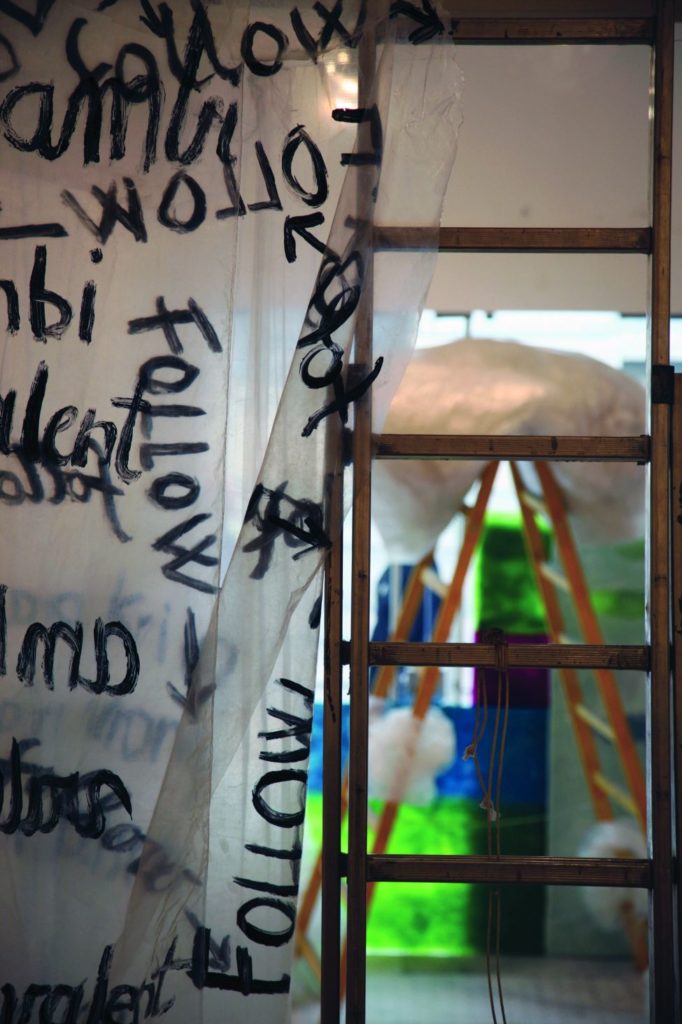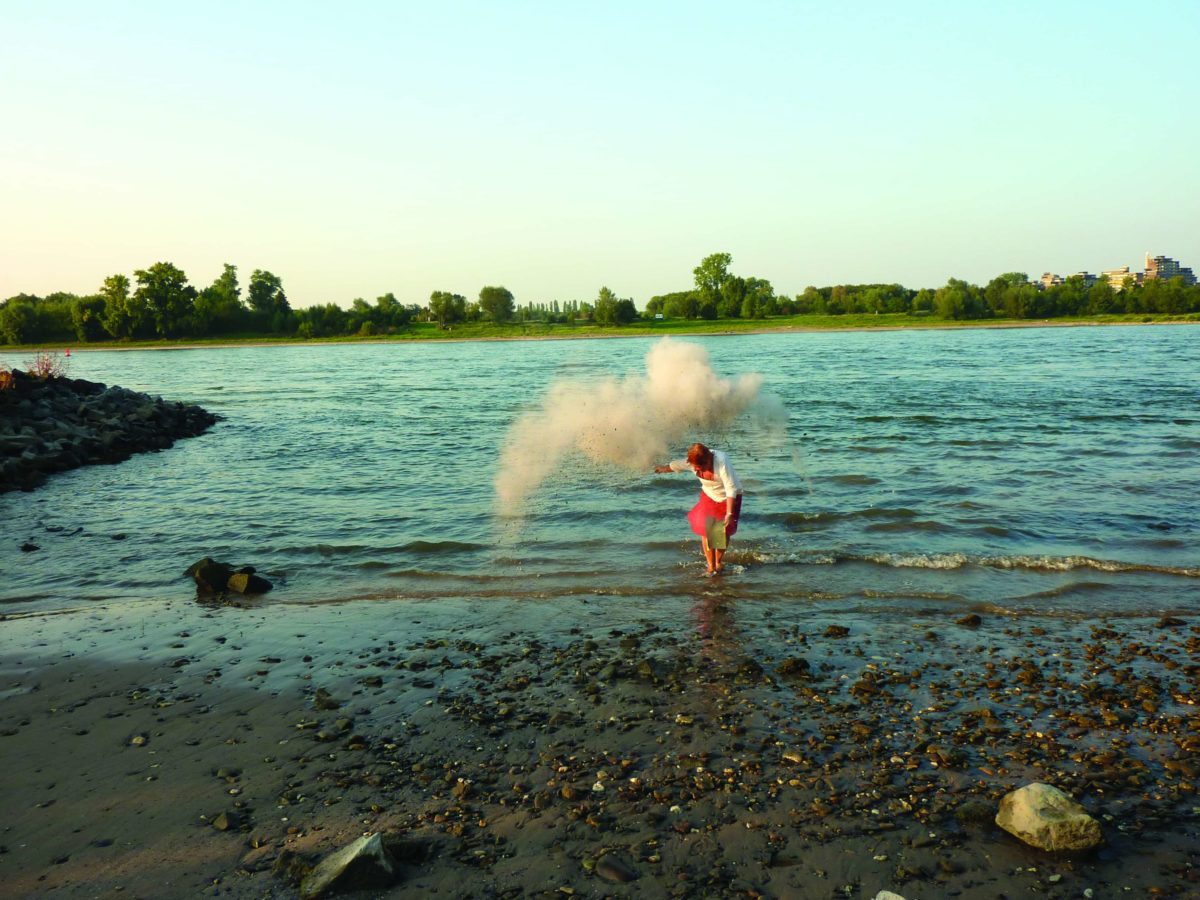My site specific installations are personal dialogues with the atmosphere, character and message of each individual exhibition space. I am particularly inspired by contemporary architecture and its new light and space constellations to which I am responding with my site-specific installations and visual interventions with colours. My installations are three dimensional poems.
“Pictograms”
Paris – Cité internationale des arts , 2018
Zagreb, 2020
Installation PICTOGRAMS deals with ancient scripts and their visual qualities. Most of these signs have not been decoded so far but they nevertheless radiate a kind of “meaning” beyond rational understanding. Sometimes they remind me of icons on smartphones.
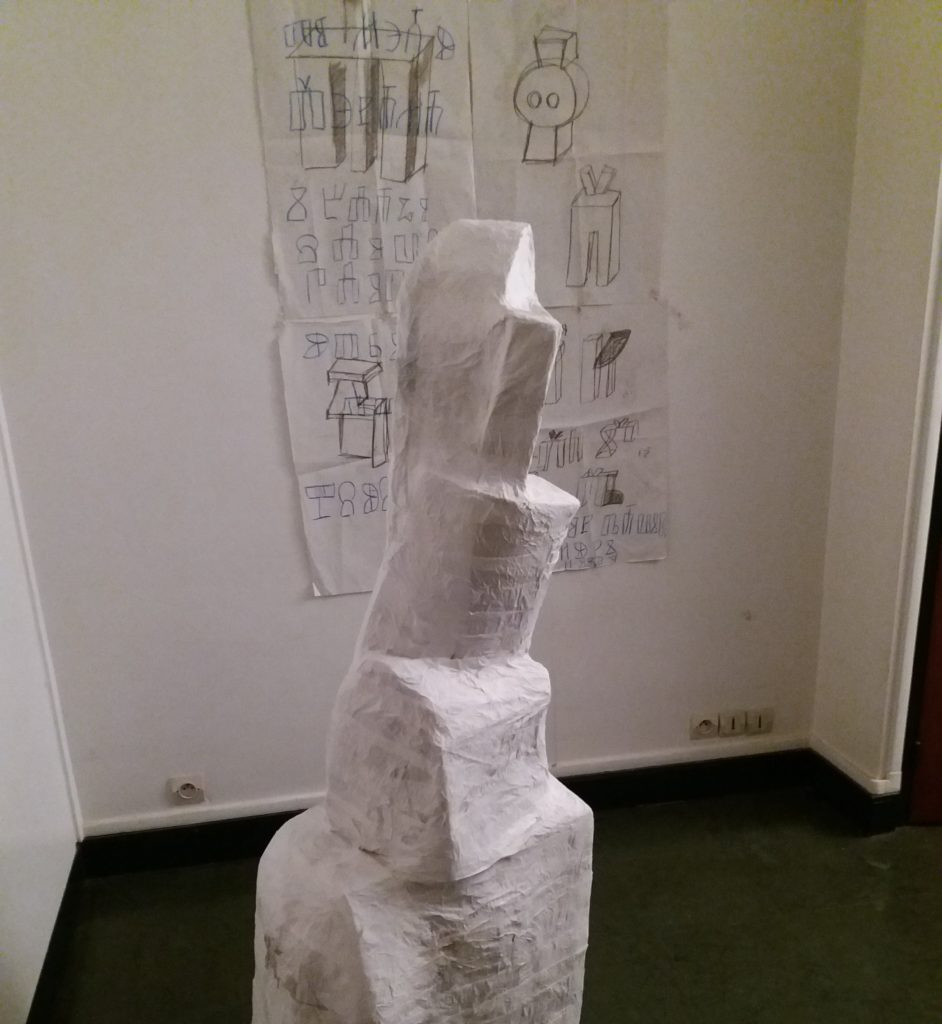
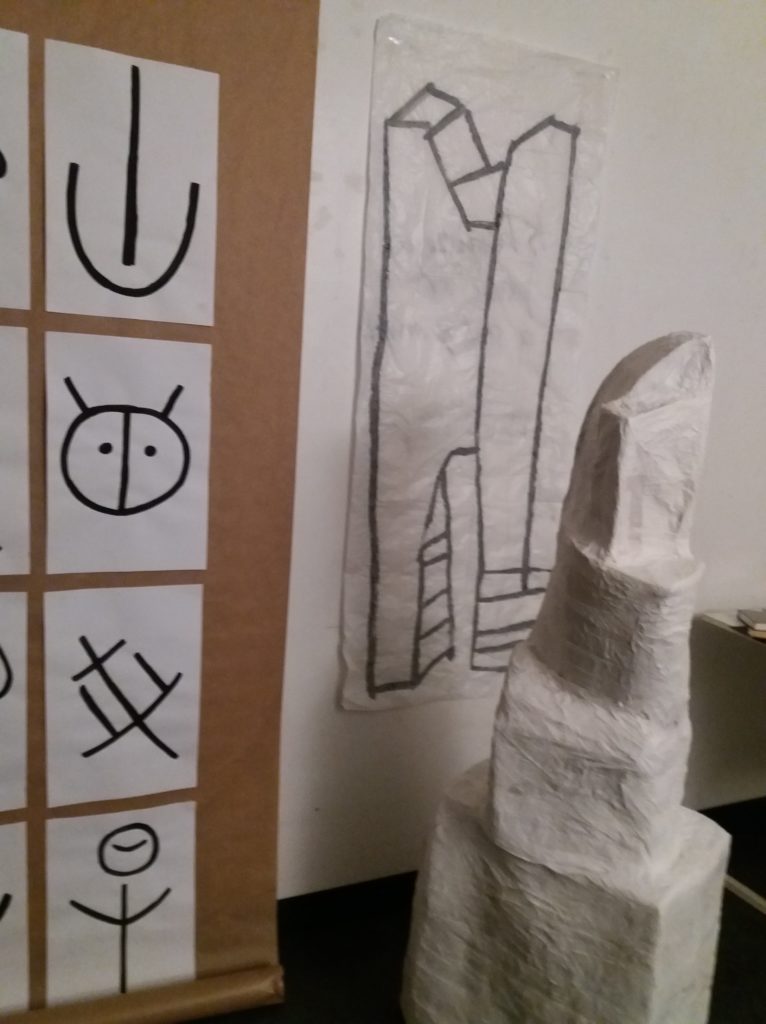
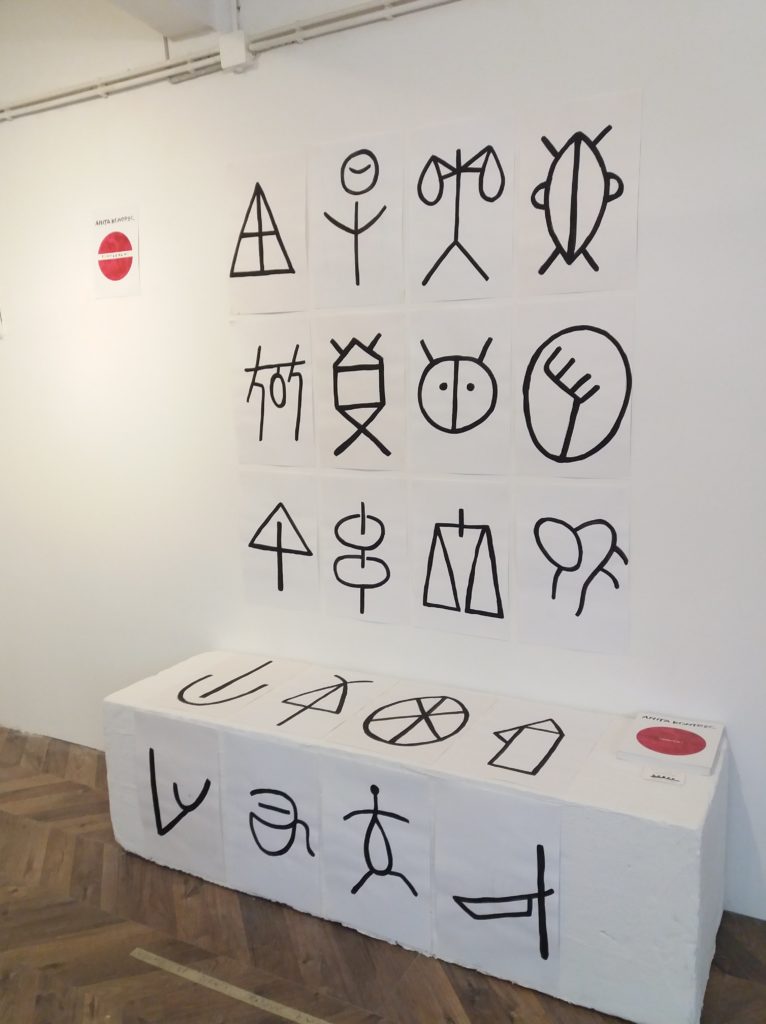
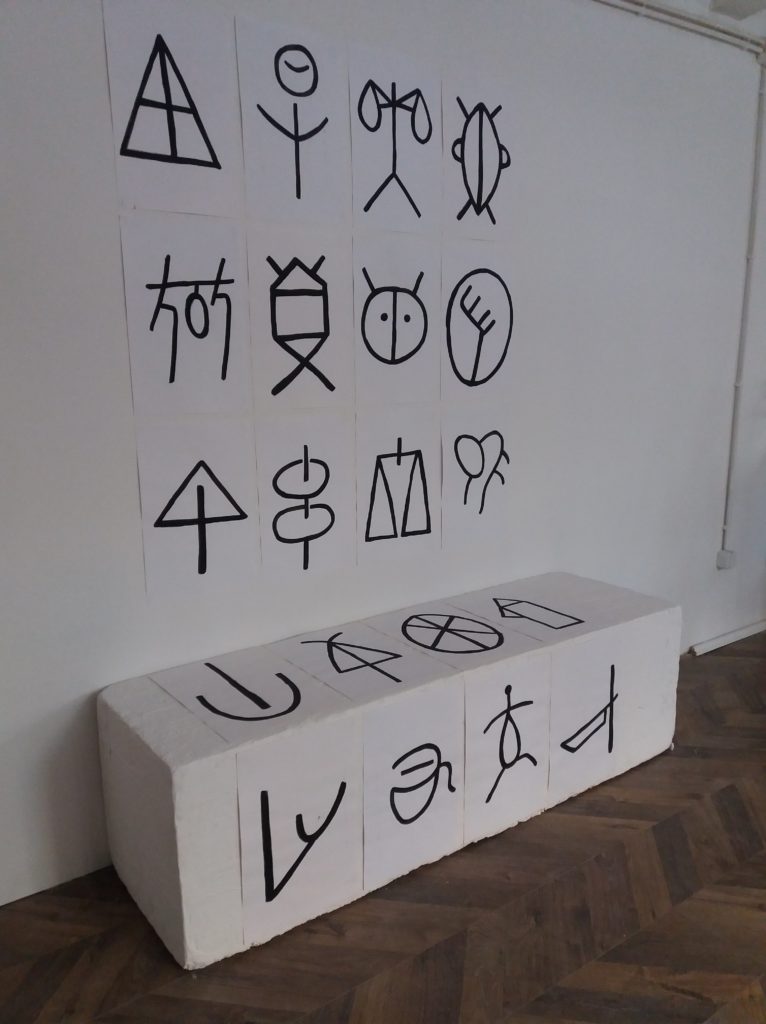
“Script and Architecture”
Chicago – John David Mooney Foundation, 2019
In this installation I am showing the correlation between croatian medieval script GLAGOLJICA (Glagolitic script, dating back to10th century), with pre-romanesque sacral architecture from the same period. Development of script and architecture was a parallel process – both script and romanesque architecture were / are crucial aspects of croatian cultural identity.This installation was exhibited in John David Mooney Foundation together with drawings and sculptures by the most famous croatian-american sculptor Ivan Meštrović.
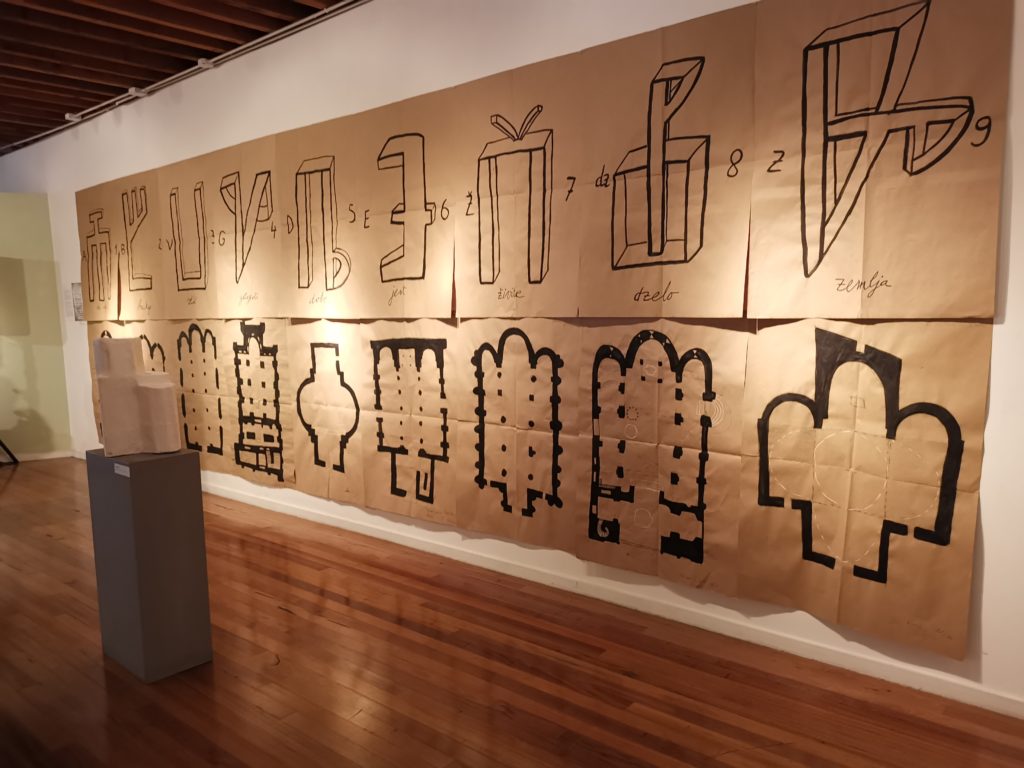
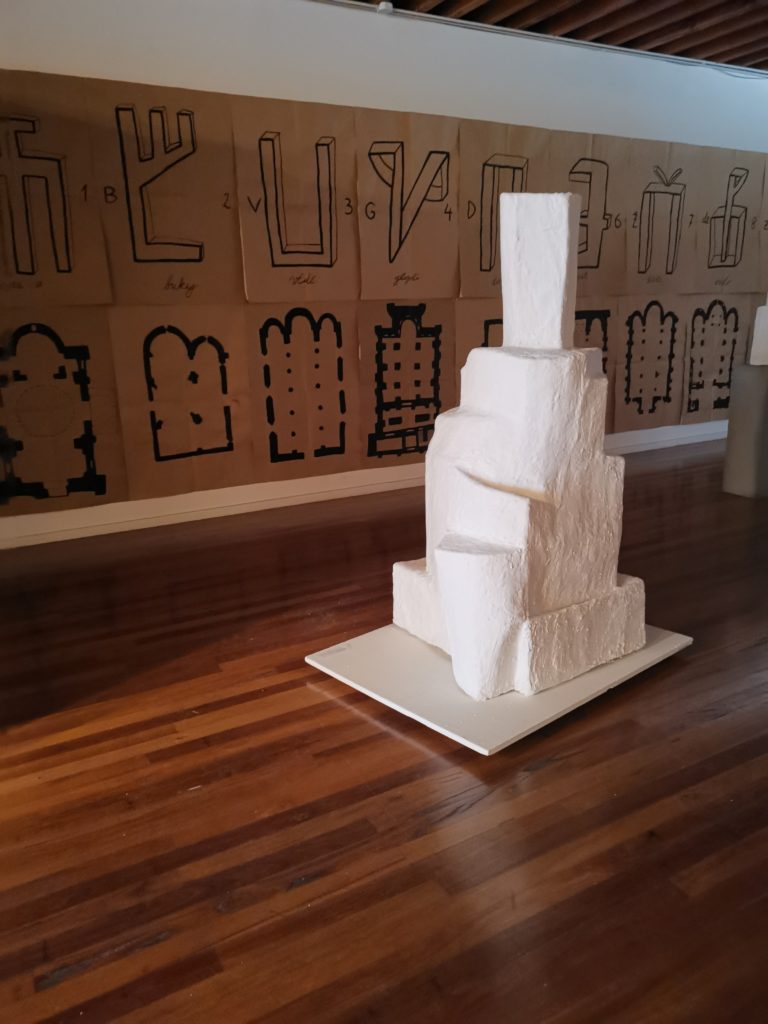
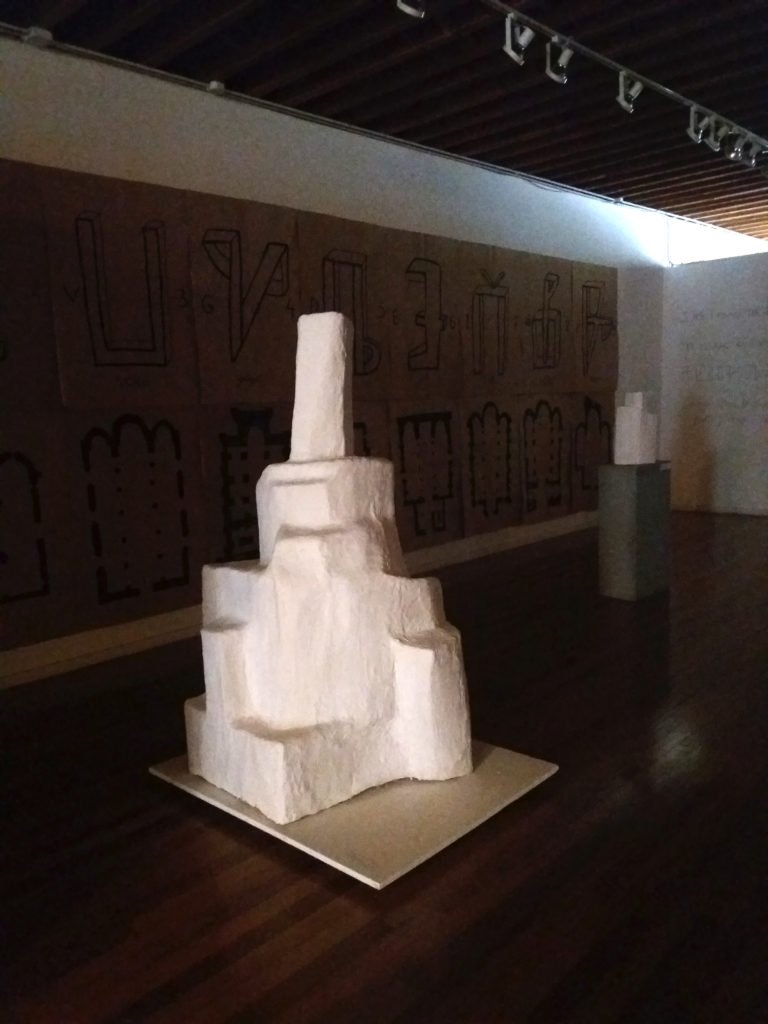
“BAUSTELLE BYBLOS – Under Construction“
Bronze sculptures, stones, stamps , 1993 / 2016; variable dimensions
Installation „Baustelle Byblos – Under Construction“ is a part of my RECALL BYBLOS project which was shown in Ludwig Forum für internationale Kunst, Aachen and Klovićevi dvori, Zagreb in 1993 and at my retrospective ROUNDABOUT / KREISVERKEHR / KRUŽNI TOK in Zagreb in 2016.
This installation stands for permanent process of construction – reconstruction and decay of urban civilisations. Byblos stands for Phoenician civilisation and the city of Byblos which was famous for developing script consisting of 22 letters. It became the basis / a paradigm for all modern alphabets. Development of script and written communication is one of the greatest achievements in the history of mankind and is closely connected to urban civilisation.
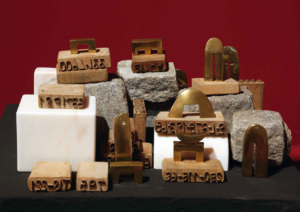
“HOUSES AND DREAMS”
Mixed media – plaster, drawings on paper, objects, inscriptions on the wall, 2017 , variable dimensions; Venice – Palazzo Mora, 2017
This installation is a part of my Houses and Dreams project which is dealing with different aspects of migrations, homelessness and urban development.
Houses and Dreams is interdisciplinary project. So far it has been shown in Venice ( 2017, in the context of 57th Venice Biennial; London – Dulwich College, 2018 – Paris Cite international des art; Chicago – John David Mooney Foundation).
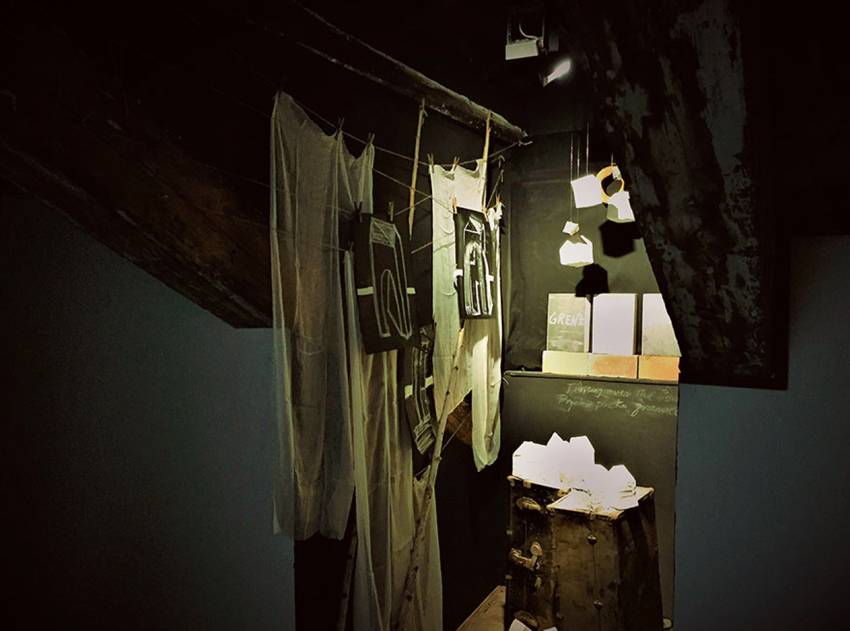
“PILLOWS FOR SEI SHONAGON”
Acrylic drawings on silk paper, thin tissue, 2000, variable dimensions; Zagreb, 2005
This installation is inspired by the „Pillowbook of Sei Shonagon“, written by famous japanese lady-in-waiting who lived at japanese court in 10 th century.
This book (which I have translated from English into Croatian in 1987) is permanent inspiration for a number of my artworks – objects, installations and performances.
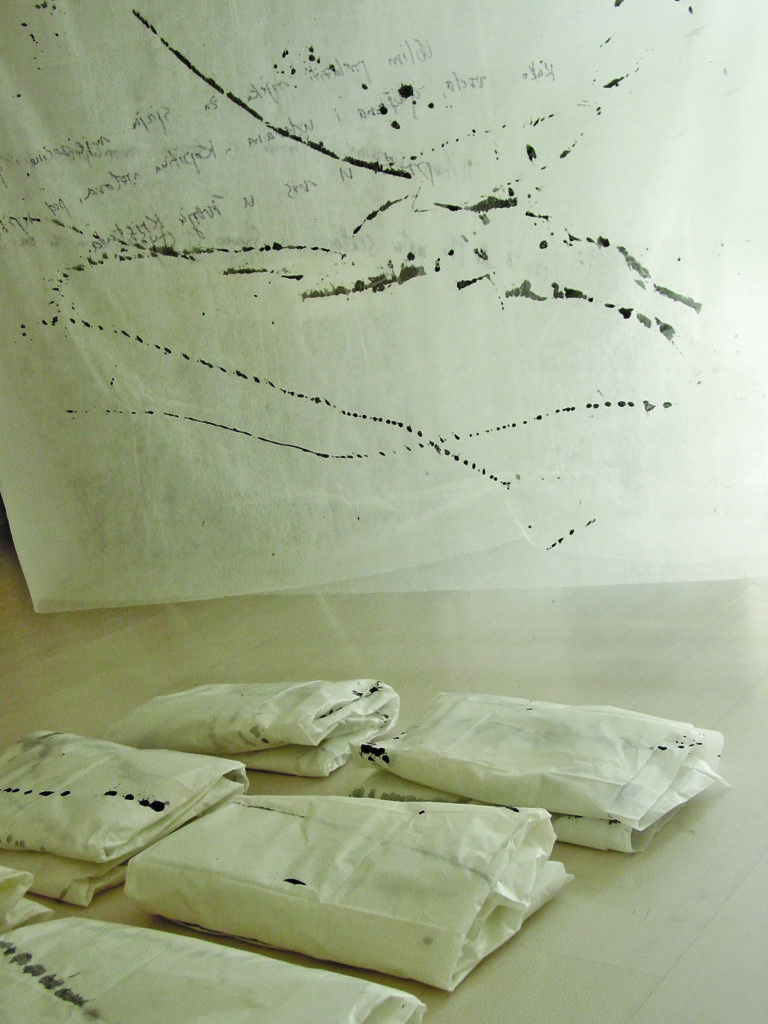
“CALLIGRAPHIC LANDSCAPES”
Ambiental installation and dance performance in Halle 14, Spinnerei – Leipzig, 2013
This installation consists of thin transparent veils with inscriptions (quotations from the „Pillowbook of Sei Shonagon“) combined with acrylic calligraphic drawings. The veils were fixed to the ceiling thus creating a poetic environment covering the space of some 300 square meters. This installation had an interactive character – audience was welcome to sit, meditate, dance or lay on the floor.
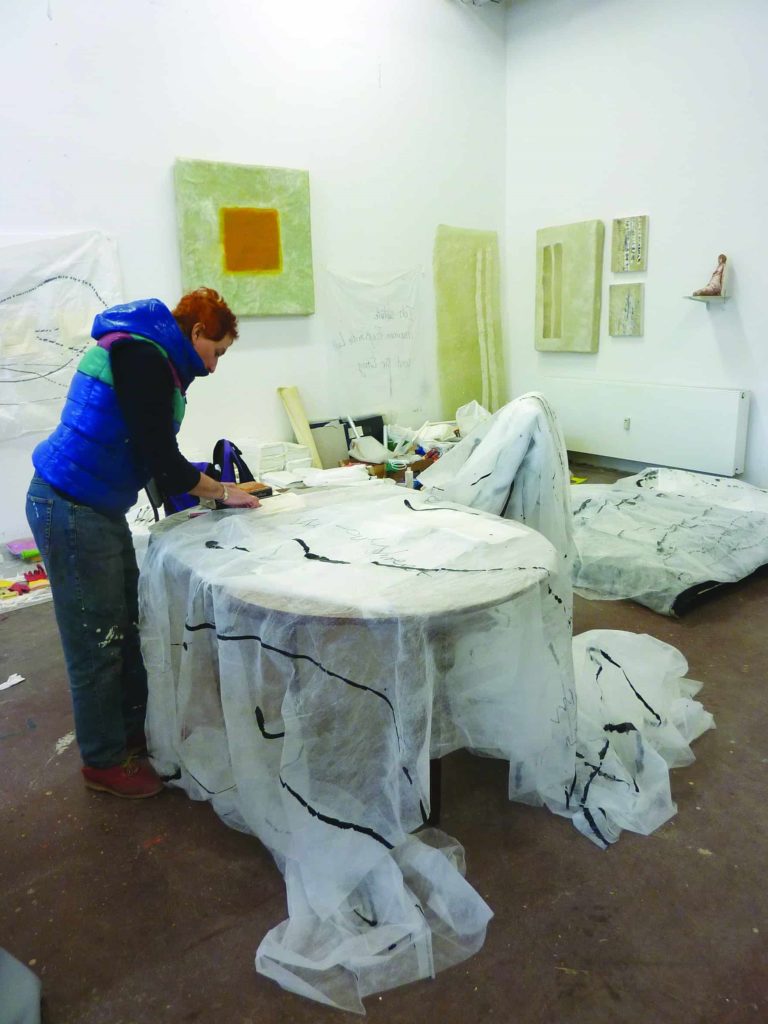
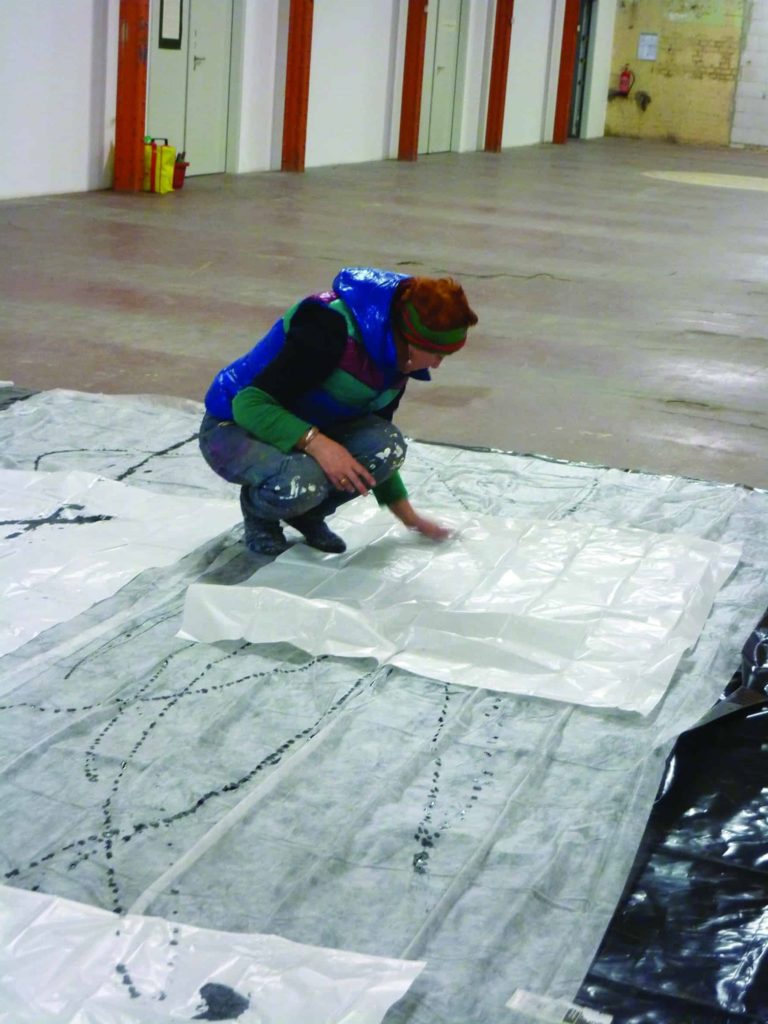
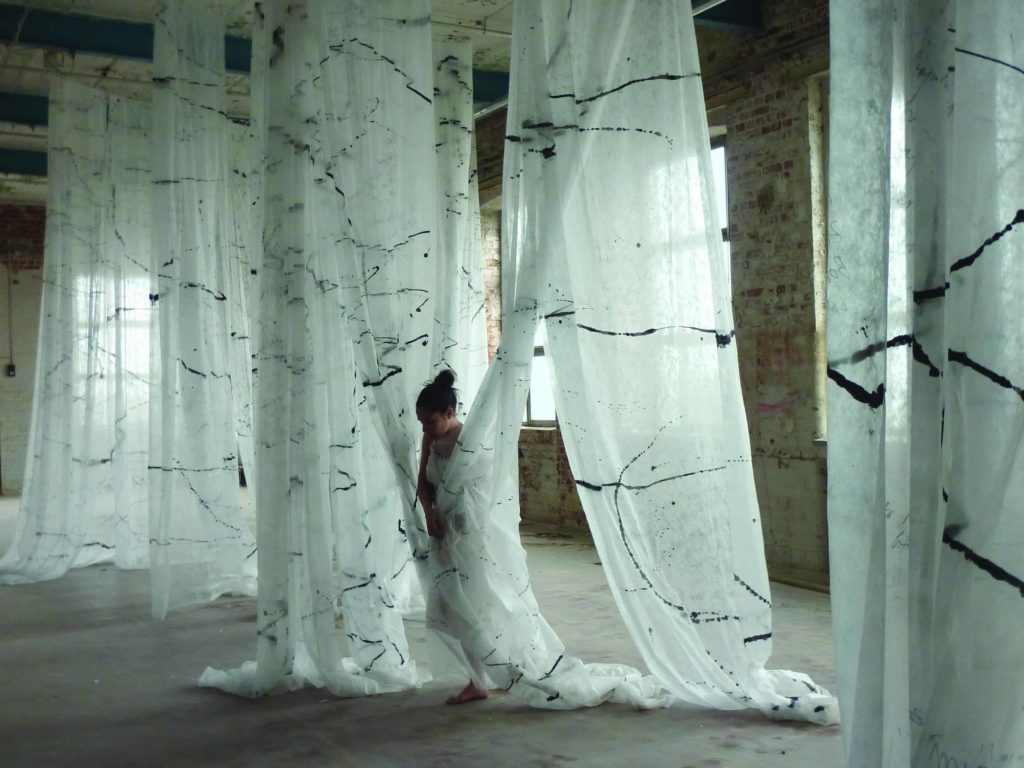
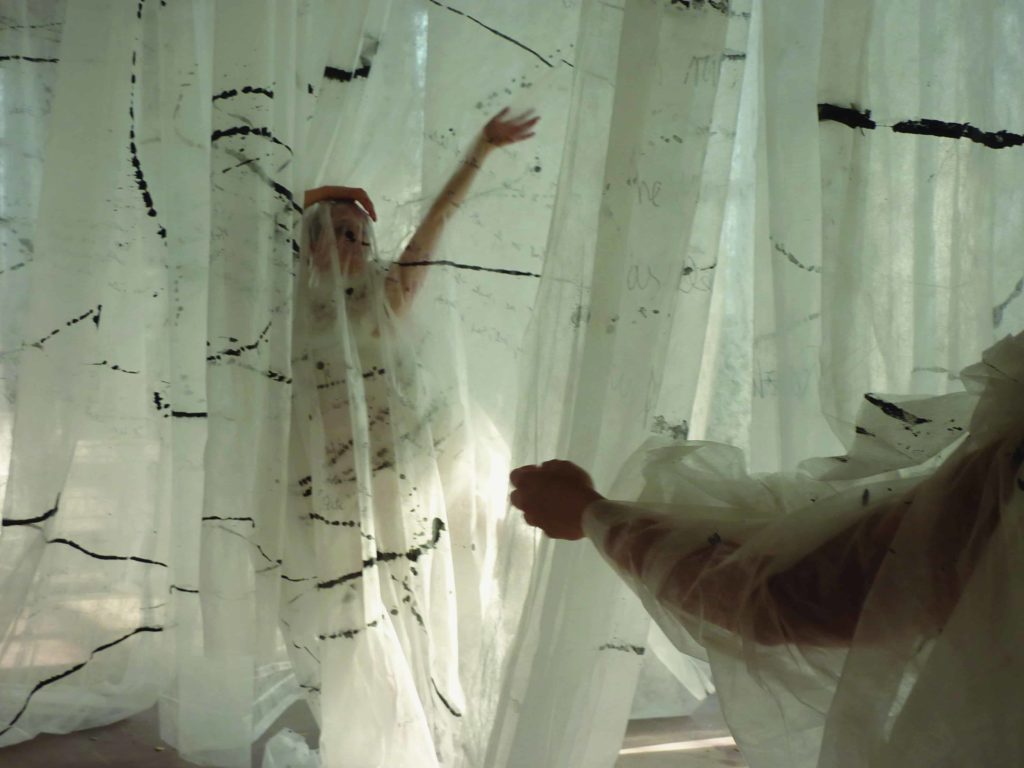
Calligraphic Landscapes Installation by Anita Kontrec / camera: Maeshelle West-Davies
“This component of gesture and calligraphy has been a significant dimension of the artist’s work from 2013 until today. The poetic objects dedicated to Sei Shonagon, a court lady, who lived over a thousand years ago and wrote the novel The Pillow Book with diary records about nature and life in court, stand for an extremely refined and lyrical contribution of Anita Kontrec to our recent art. Whether she uses paper, felt or wrapped silk paper as the basis, these “records under the pillow” find an adequate artistic expression in Anita Kontrec’s work. Varying in size, from very small drawings in black acrylic paint on paper to large spatial items carried freely by the flow of air in the gallery space, their gestural and calligraphic sensibility brings them close to the work of the German graphic artist and painter Lore Heuermann, who writes disturbing calligraphic items using automated writing.”
Iva Körbler, art historian, Zagreb
“BURNING THE DOCUMENTS AT THE RHINE – kein Mensch ist illegal”, Cologne, 2000
After I have moved from Zagreb to Cologne in 1989 for years I had to present at the Immigration office a number of documents in order to prove my legal status in Germany. Different forms of bureaucratic pressure continued even after I have been granted German citizenship few years later. Millions of people all over the world (not only immigrants and refugees) are exposed to such procedures; different forms of state control tend to become more and more present in our daily lives. This performance is my protest against such tendencies
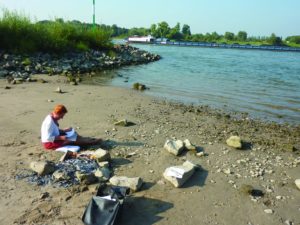
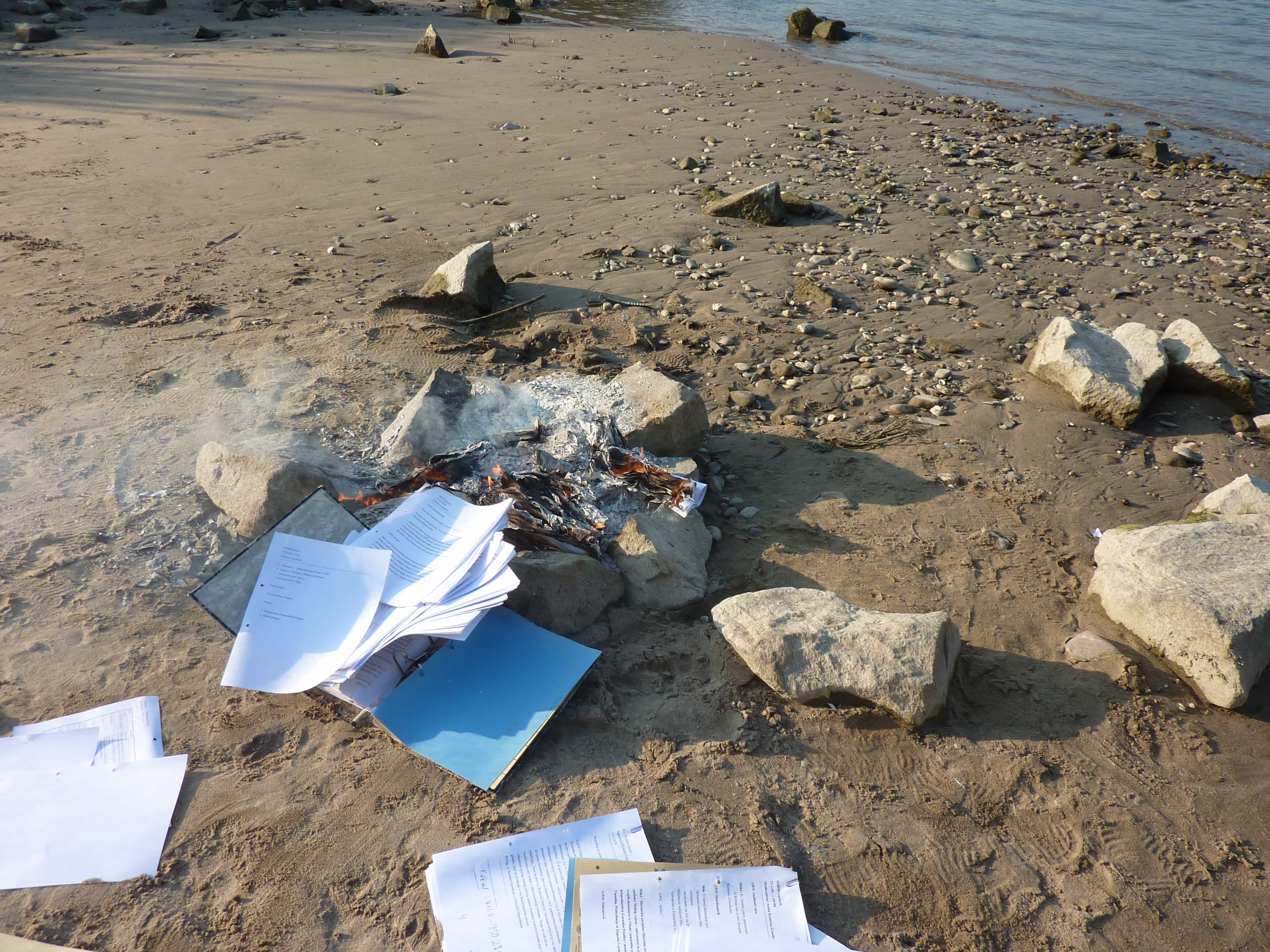
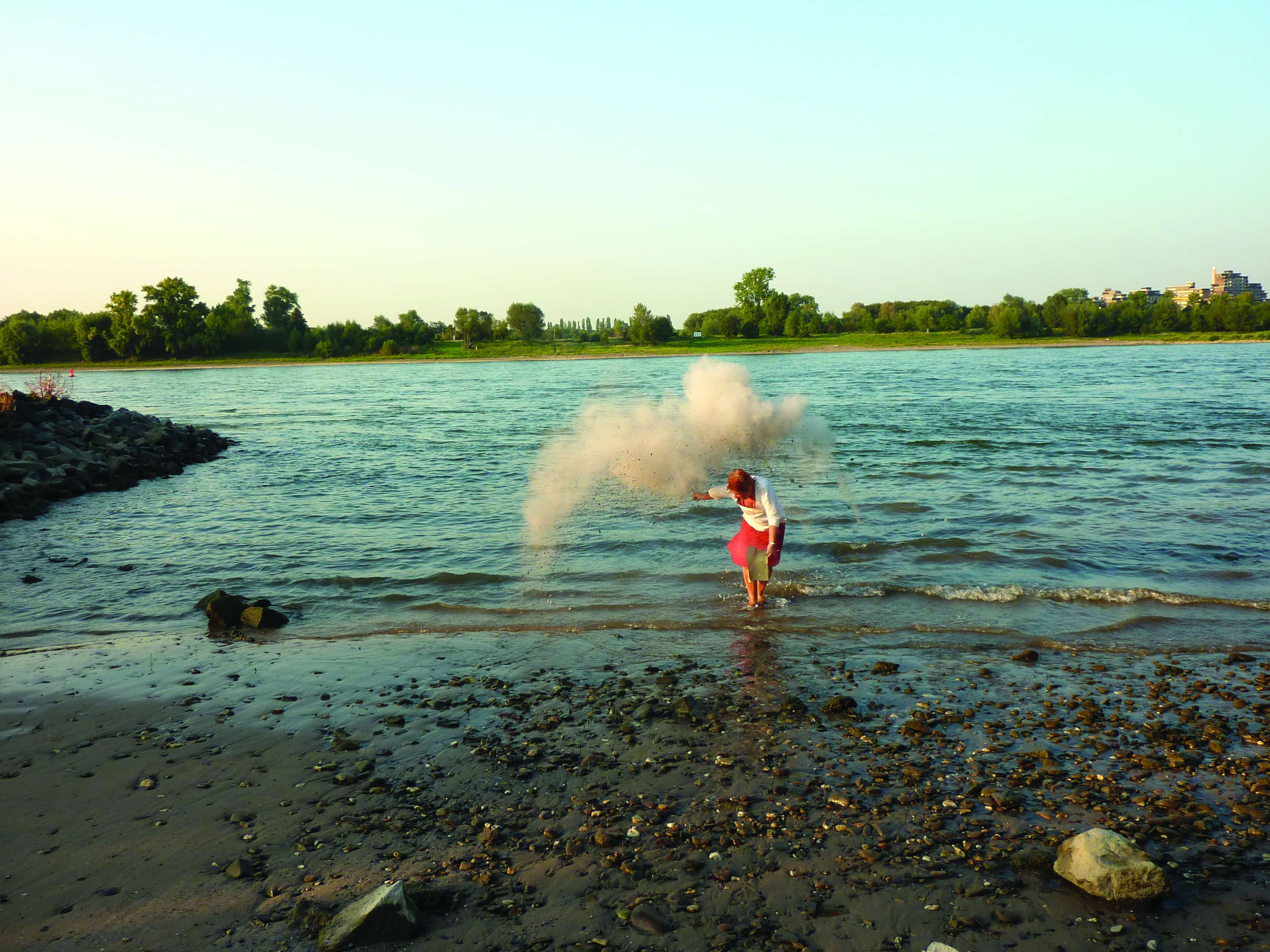
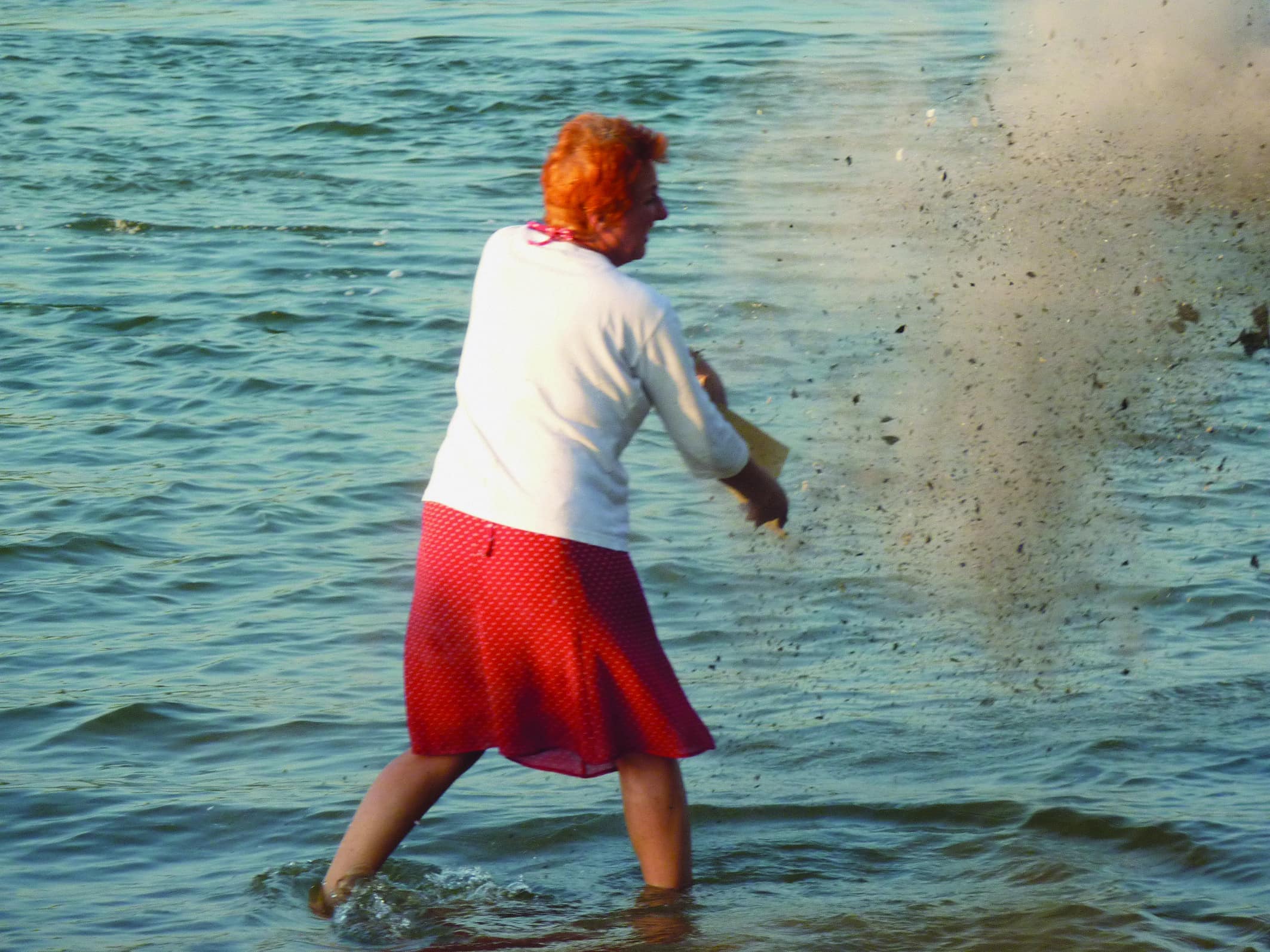
“BURNING HOUSES”
Zagreb, 2016
Performance at the opening of my retrospective in „Prsten“ Gallery in Zagreb, 2016 Destroying houses – villages, cities and whole regions – has always been a war strategy which caused migrations and enforced political changes. Destruction of homes means destruction of existence and of personal and cultural identity. War against Bosnia and Croatia in the 90-ties has caused the first big migration wave in Europe after the World War II. Since then there have been millions of people who had to leave their homes due to the wars in their countries. Migrations have become crucial political and cultural problem of modern societies.
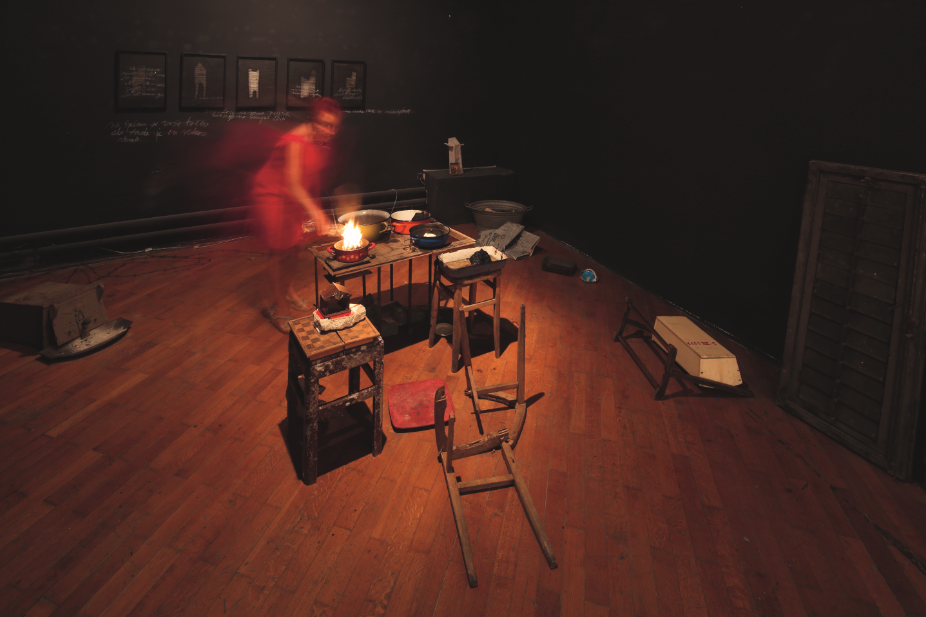
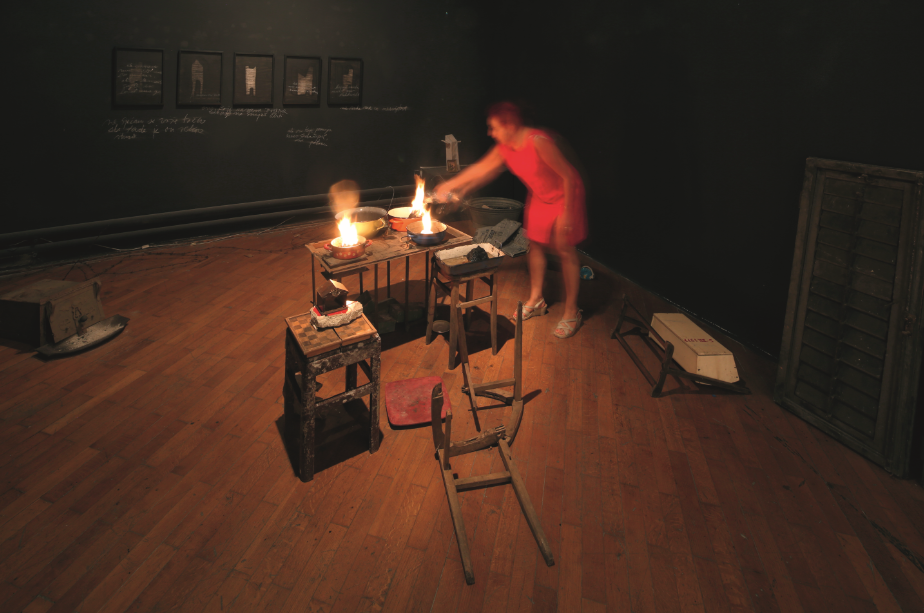
“WARTEN SIE, SIE WERDEN PLAZIERT / Wait, you will be placed”
Installation in the Halle 14, Spinnerei- Leipzig, 2013
Inscriptions on the wall and on the floor, objects, drawings with texts
When I first came to the former East Germany /GDR in 1979 I saw this inscription at the East Berlin airport Schönenfeld. When I returned to Germany 10 years later I witnessed the fall of the Berlin wall.
Many citizens of former GDR who tried to run away from east German totalitarianism tried to cross the Berlin Wall and by doing so many of them were killed. Central part of this installation is the object GRENZ-ÜBER -GÄNGER ( which is / was German word for people who tried to cross the border illegally). This installation is dedicated to people who risked and lost their lives hoping to reach freedom. With the most recent developments and shapes of state control this topic (seeking freedom) seems to be of crucial importance nowadays too. We are getting surrounded by invisible Berlin Walls which are sometimes even more difficult to cross.


„ERDE-KRIEG-ASCHE”
14 big size sculptures depicting men, women and children, cement sculptures
Site-specific installation, historical City Hall, Cologne 1992
Having moved from Zagreb to Cologne in 1989 due to the political tensions and the war which broke out in my home country Croatia in the beginning of 90-ies, I have witnessed the biggest migration wave after the World War II in Germany. This installation was dedicated to refugees from ex-Yugoslavia as well as to the millions of refugees all over the world.

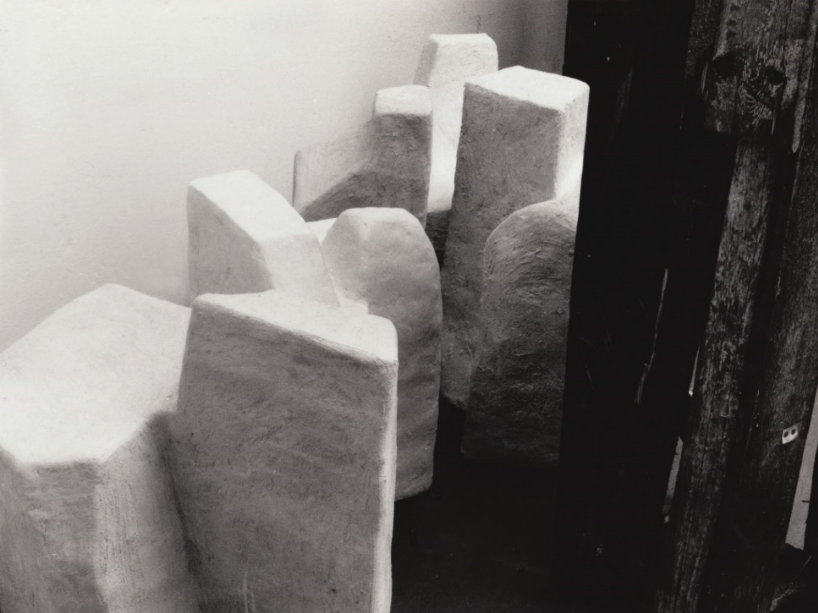
“HOUSES OF MEMORY”
Plaster sculptures on wooden towers (dimensions ca 300 x 700 cm)
This installation was part of RECALL BYBLOS project shown in Aachen and Zagreb. It refers to ruined homes, chruches and cities during the war in Bosnia and Croatia, leaving hundreds of thousands people homeless. They could only dream of their former homes and hope to find new places to live.

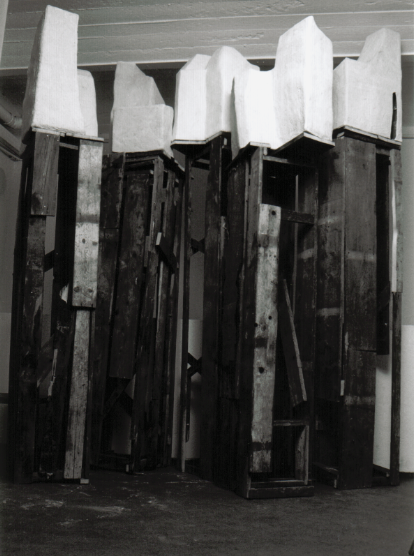
“RECALL ATLANTIS”
Site specific installation, mixed media ( burned books, poetic objects, picture objects, inscriptions on the walls), Gallery Karas, Zagreb, 2006 My exhibition RECALL ATLANTIS in Galery Karas in Zagreb was ambiental installation dealing with the topic of rise and decay of great civilisations of the past. Atlantis was one of them and stands for the paradigm of highly developed civilisation which – for until unknown reason – simply disappeared.
